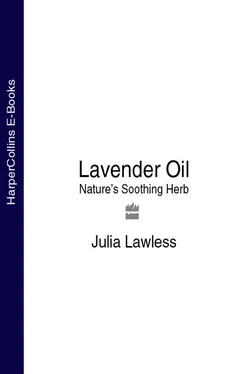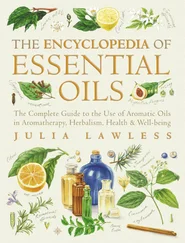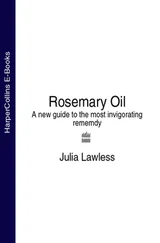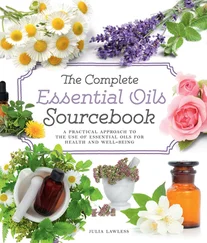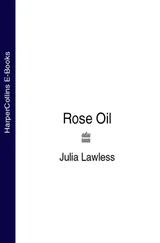The story of lavender, and indeed the whole aromatherapy movement, could be said to have its roots in two neighbouring countries: England and France. At one time, the English and French were the main producers of lavender and both enjoyed a rich and established tradition of using herbal remedies and preparing aromatic oils. But whereas in England the use of plants and essential oils for healing purposes was largely lost during the industrial revolution, the French maintained their strong rural heritage and their long-standing herbal tradition by integrating it into a modern framework. Many French doctors today prescribe essential oils as part of their clinical practice, and take a scientific approach to phytotherapy (herbal medicine) and aromatherapy.
In England, on the other hand, essential oils and herbal remedies are still viewed mainly with suspicion by most pharmacists and general practitioners, or dismissed as something ‘quirky’ or ‘old-fashioned’, in spite of growing popular interest. Aromatherapy in England has consequently developed along different lines from that of the French model, and is seen more as a ‘complementary’ type of therapy than a ‘mainstream’ clinical treatment. In Britain, aromatherapy is mainly the province of qualified aromatherapists, most of whom also use massage as a central part of their work, making it particularly suited to stress-related problems or psychosomatic conditions.
Aromatherapy could therefore be said to have developed into three interrelated forms or practices:
1 Clinical Aromatherapy – principally practiced in France
2 Aromatherapy Massage – principally practiced in the UK
3 Home Aromatherapy – in the tradition of ‘herbal simples’, i.e. easy-to-use household remedies that can be used to treat a variety of common ailments.
This book touches on all three areas, especially the last, for lavender oil has been used as a household remedy for centuries and its various applications have been tried and tested over time. It is a very safe oil which can be used easily for first-aid purposes as well as for a wide variety of common problems such as skin complaints, respiratory disorders, muscular pains and children’s illnesses. Its classic floral fragrance lifts the spirits; its soothing anti-depressant properties are ideally suited to the stressful climate of 21st century life.
The type of lavender oil that is most commonly available, and the type which is referred to here, comes from the ‘true’ lavender ( L. angustifolia, L. officinalis, L. vera ), also known as ‘Old English Lavender’. There are, however, many varieties of lavender, each having its own characteristics: for example, the oils of aspic or spike lavender ( L. latifolia ) and lavandin ( L. x intermedia ) have a more stimulating effect than that of ‘true’ lavender. A comparison of these different types of lavender can be found in Appendix A at the end of this book.
Lavender’s Medical and Historical Background
PART ONE
Конец ознакомительного фрагмента.
Текст предоставлен ООО «ЛитРес».
Прочитайте эту книгу целиком, купив полную легальную версию на ЛитРес.
Безопасно оплатить книгу можно банковской картой Visa, MasterCard, Maestro, со счета мобильного телефона, с платежного терминала, в салоне МТС или Связной, через PayPal, WebMoney, Яндекс.Деньги, QIWI Кошелек, бонусными картами или другим удобным Вам способом.
